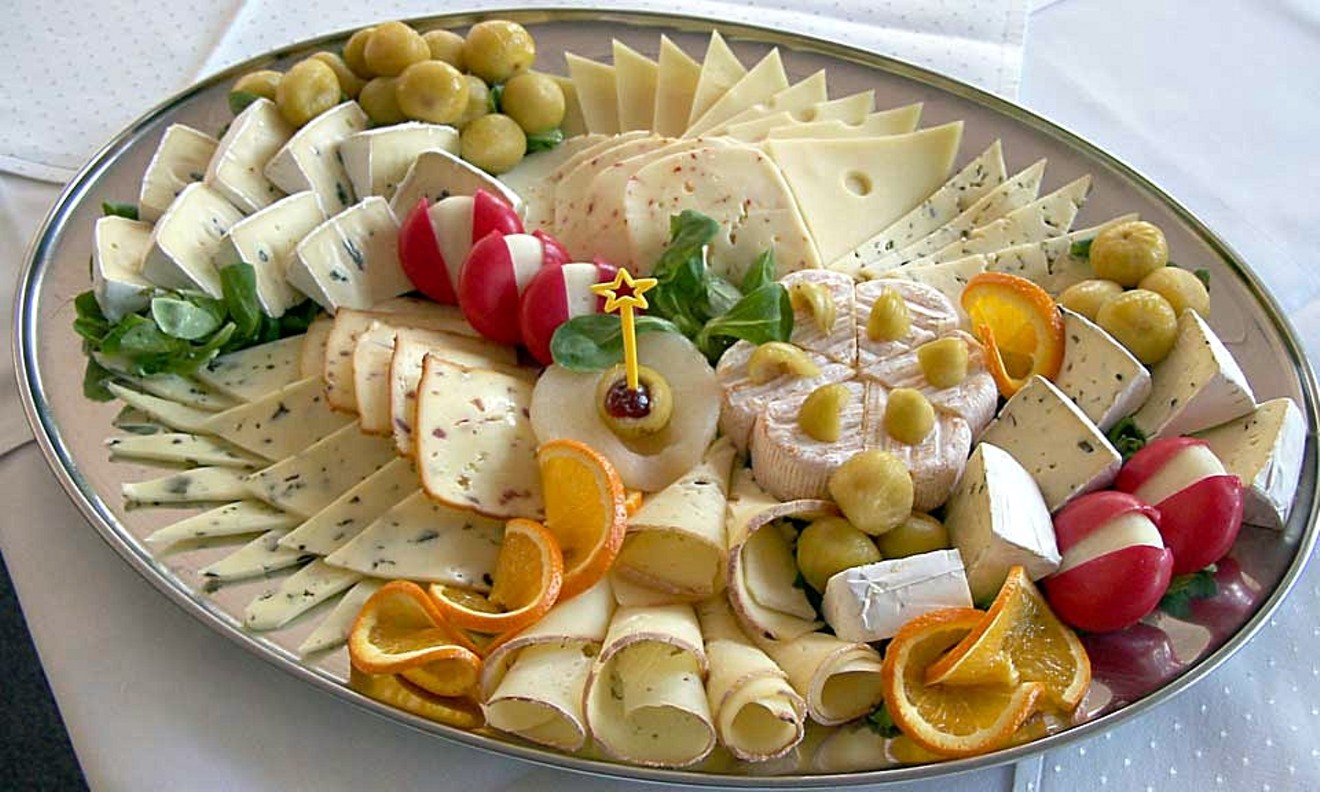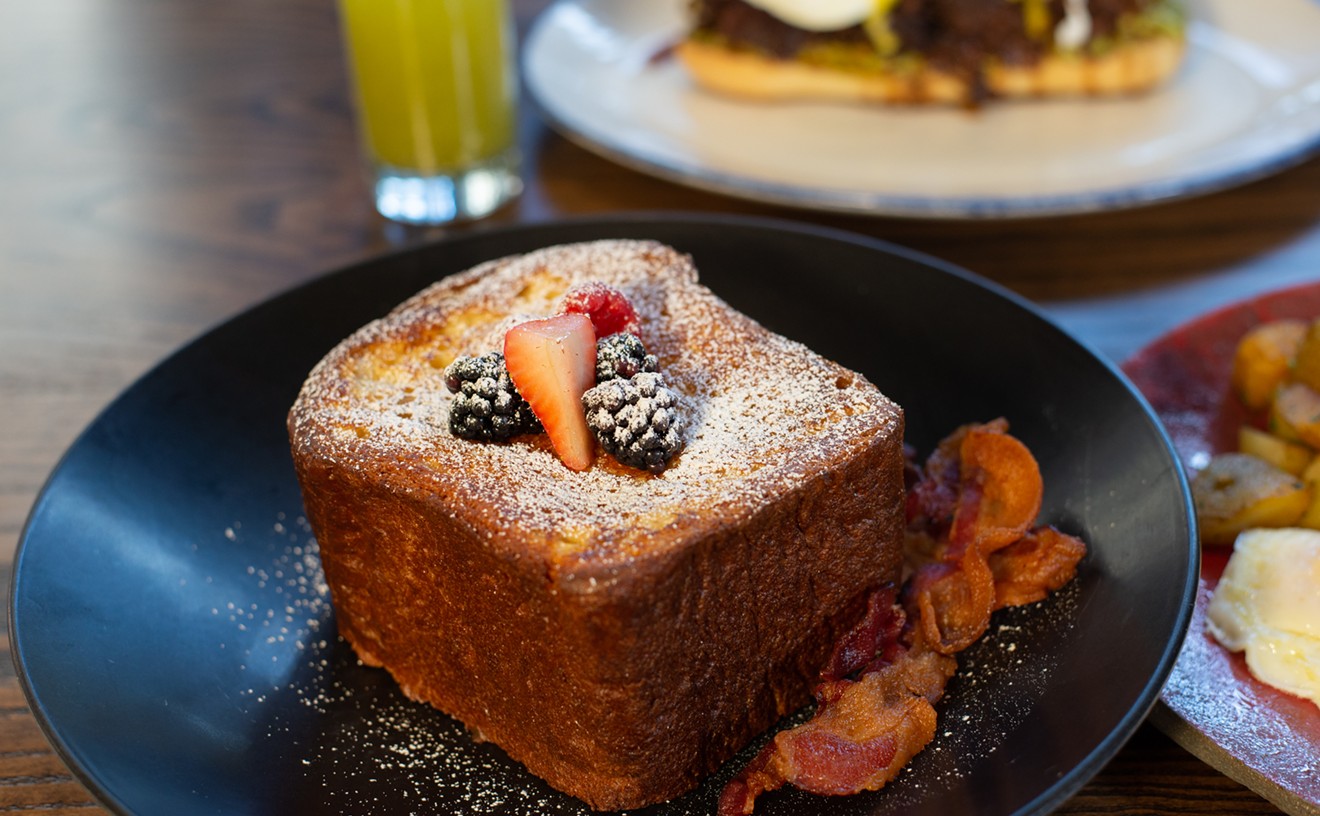Surely you've asked the question while eating funky cheeses with friends. "Are we supposed to eat the rind or not?" Unless you're surrounded by a bunch of cheese nerds, the answers that come back likely have as many holes as a cartoonish slice of Swiss.
Even with the mild rind of a brie cheese you've undoubtedly encountered a few friends who carefully cut their way around the snowy white outer layer to get at the good stuff inside, while others almost savor the rind. And as the exteriors get more and more robust, the rind lovers slowly lose their enthusiasm for the taste of mold and time.
So how do you really know if you should be eating the stuff? Paula Lambert, the woman behind the Mozzarella Co. in Deep Ellum answers simply. "It depends on if you like the way it tastes." That ubiquitous brie, for instance, is encased by a rind of penicillium bacteria, which imparts a soft, tender rind that tastes a bit like mushrooms. Skip the rind on one of these carefully aged cheese and you'll be missing on the best part.
Other rinds however, are a little less palatable
"Some rinds are dusty gray and brown," Lambert points out. " You probably won't like the way it tastes. She describes the flavor of the rinds on well-aged cheeses as very unpleasant, and the texture? "It's more like cardboard."
Still the rinds are perfectly safe to eat, so if you're a masochist and you like the flavor, as well as the act of digging gunk out of your molars, by all means, dig in!
There are of course a few rinds you never want to eat. Cloth, paper and wax materials aren't poisonous, but they aren't food or even a true rind, either. Lambert told the story of a customer who called her store asking for help with a soup that had gone haywire. The woman had watched Rachel Ray, who said adding the rinds from cheeses to a broth is a great way to enhance a soup.
This is absolutely true if you have a Ziploc bag full of parmigiano reggiano ends in your fridge, but this woman was hanging onto the waxy exteriors of Gouda and Edam. What she thought was a true rind resulted in a molten layer of wax that floated on the top of her stockpot — not exactly good eats.
Still Lambert reminded me that, while not appetizing, the material was food grade wax, and eating it was not dangerous in any way. The point re-enforces the notion that the best way to determine whether or not you should eat a rind is simply to taste a little.
Since taste is so subjective I headed back to Oak Lawn's favorite cheese shop to corner Rich Rogers and get a better handle on the specifics. We came up with a list of cheeses you should definitely eat enthusiastically, rinds your should eat enthusiastically if you enjoy, and rinds that really have no business in your belly.
First, let's look at the good.
The fine white layer on this triple cream brie from France adds a delicate flavor of mushrooms to the cheese. While Rogers says he doesn't enjoy the texture it imparts (it detracts from the delicate creamy center) he admits it has a nice flavor. Bottom line: Taste it. If you enjoy the flavor the rind imparts, eat as much as you like.
Skip the rind on a Taleggio, the gateway cheese to stinky cheeses, and you'll miss the whole point of washed rinds. If you're not enjoying this rind, you may want to start shopping in different section of the cheese counter.
If you take home a ball of Coupole you'll almost have to eat the rind. Rogers carried the ball delicately from the counter to the table where I was photographing the cheese. It was so soft it moved under its own weight. It would be almost impossible to no eat the rind as you dive into the cheese because the exterior is so delicate. It also looks like brains.
This aged coat cheese is treated with mold spores to induce that wonderful musky flavor we associate with more popular blue cheeses. The inside of this cheese is a chalky but smooth and white, with the slightly funky flavor you'll find in many aged cheeses. Sample some with the rind and you'll get that same funk multiplied by 10, along with spicy and peppery flavors.
The exterior of this cheese is coated in a layer of black tea and honey. Cheeses like these use washes and coatings that are meant to impart flavor and become a part of a cheese. Other cheeses use chilies and herbs to flavor from the outside. Eat these rinds with enthusiasm. They're a distinct part of the experience.
Now let's look at the bad. Remember, it's still subjective.
This domestic blue cheese is wrapped in Syrah grape leaves that have soaked in brandy. It may sound delicious, but they're tough and chewy. I made a joke about chewing the leaves like tobacco after eating the cheese. Rogers didn't think it was funny. But feel free to eat this rind if it tastes good to you.
The rind of this well-aged pecorino is tough and dry. You could eat it, but the flavors it imparts aren't exactly delicate or refined. In fact, they're noisy enough to start to detract from the good stuff inside.
Sixteen months is a long time for a milk product to sit around exposed to air — even if it was a carefully controlled environment. This cheddar is wrapped in cloth that you absolutely should not eat and has been exposed to dust, cheese mites and all sorts of strange creatures. If that sounds like your thing, eat as much as you can handle.
The exterior of the Tomme Crayuese smells exactly what you clean your toilet with. Ammonia is a byproduct of this aging process of these natural rind cheeses, and while the inside of this cheese is delicious, the outside smells worse than Mister Clean. Eat at your own risk.
And the ugly?
Sure it's safe, but wax tastes like wax. It's not food and you have no business eating the casing on this cheese. If a rind sticks to your teeth like cheap bubble gum, shift your focus to the inside of the wheel. You'll be much happier. But remember it's your palate, and all of this stuff is perfectly edible. There is only one rule that governs the consumption of cheese rinds: eat what suits you.











